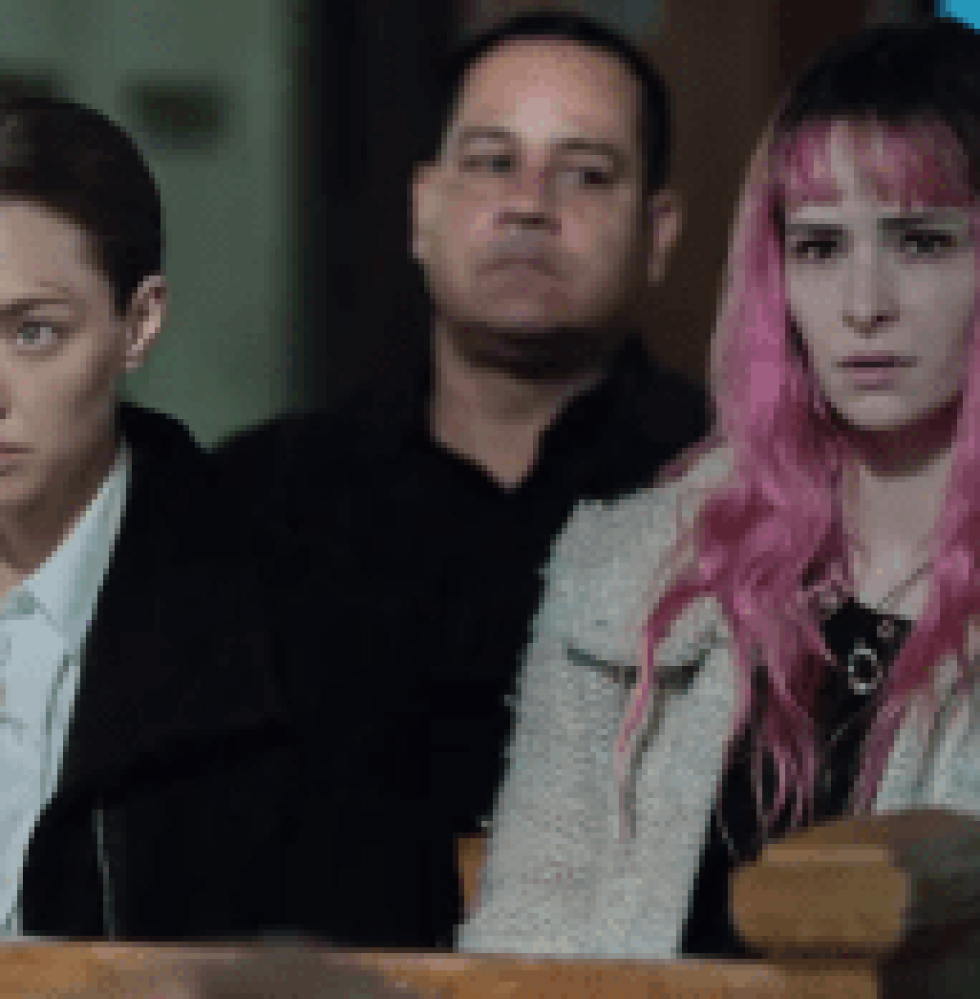
Peacock’s latest cop drama shines an unflinching light on a pair of siblings divided by the ongoing strife of the American opioid crisis. Based on the novel of the same name by Liz Moore and co-created for television by showrunner Nikki Toscano, Long Bright River tells the story of Mickey (Amanda Seyfried), a police officer who patrols the Philadelphia neighborhood of Kensington, a place hit hard by drugs and homelessness. When a series of murders begins in the area, her sister also turns up missing, throwing her headfirst into unraveling the crime spree.
Here, Toscano opens up about real life research and translating relationships and intentions from book to screen.
DEADLINE: How did this story find its way to you?
NIKKI TOSCANO: It’s quite simple, really. My agent reached out with the book. And they said that Sony was looking for somebody to co-create it with Liz Moore and showrun the series. So, I checked out the book, hoping I could get through 30 pages, but I ended up reading it all in one sitting. I fell in love with it. Liz and I had a conversation about the adaptation and the things that were really important to both of us regarding what would translate to screen. And, luckily, they were the same things, so we were just on board with one another.

Long Bright River
Peacock
DEADLINE: I am curious if one of those things was the musicality of Mickey’s character. Was that written in before Amanda had been attached to it? Or did that exist in the book?
TOSCANO: In the novel, Mickey wanted to be a history professor. But when Liz and I had discussions about how to translate that visually to the screen, it really wasn’t that interesting. So, we began to reflect on what Mickey could be obsessed with doing that represented the promise of something greater. A way in which she could rise above her own circumstance. We felt that the music was a good fit. It was really just serendipitous that Amanda learned how to play the horn and is truly gifted in anything that has to do with music of any kind.
DEADLINE: What was one non-negotiable that you and Liz made sure made it to the television adaptation?
TOSCANO: The north star for both of us was the relationship between the two sisters and how it weaved effortlessly between the past and the present. There was something so unique to me about the book in that. In order to solve the murder mystery, the main character was forced to reflect on her own past. Additionally, how we portrayed the neighborhood was really important to us. It’s a story about a neighborhood that’s been largely affected by the opioid epidemic. And we wanted to portray that in an authentic and non-exploitative way. We wanted to preserve the fact that this was a story that not only upended the ‘cop as savior’ narrative but also upended the ‘victim’ narrative. We wanted to make sure that we were able to preserve the internal nature of Mickey.
So many times, you take a character that’s so unique and internal, and once you translate it to screen, all of a sudden she’s a character that’s saying what she means and means what she says. Then she’s completely different from the person that was on the page. So, it was very important to us to preserve that. The way that we did that was by surrounding her with people who pulled her POV out of her. Depending upon who she’s with, whether it be Thomas [Callum Vinson] or Truman [Nicholas Pinnock] or Lafferty [Dash Mihok], she’s a much different person.
DEADLINE: Mickey and Kacey’s relationship could have ended in a much more tragic way. Instead, it ends in a somewhat resolved place for both of them.
TOSCANO: I think that what it’s meant to convey is a sliver of hope that they’ll all be OK. That’s a metaphor for anyone who loves someone who’s been suffering from substance use disorder. Inevitably, you’re always questioning whether the other shoe is going to drop. But in the case of Mickey and Kacey, I think that we leave them in a good place and are hoping for their collective future.
DEADLINE: What was a scene that you thought wasn’t going to translate well, but then upon seeing it worked better than you thought?
TOSCANO: I directed Episode 6, and it had a lot of reveals in it. I was very concerned about how some of those reveals were going to land. I didn’t want that all to be on the shoulders of the actors. So, we talked a lot about what we had to do to populate the frame, whether it be through cinematography, light and dark or production design. There were a number of factors that went into us trying to protect those reveals. I would say that one of the more challenging scenes is when Mickey discovers that Kacey is pregnant with Mickey’s boyfriend’s baby because that could have come off very telenovela. And we did everything that we could to ensure that it was coming out as honestly as it could in the moment.

Long Bright River
Peacock
DEADLINE: Why was that the episode you ended up directing?
TOSCANO: I wrote a lot of episodes with Liv, and I felt connected to the material in a very real way. I think that I just felt like it was my time to raise my hand and see if I could get a seat at the table. And luckily for me, Sony and Peacock were very supportive and allowed me to come and play. I am the kind of showrunner who’s on set all day, every day, and so it felt to me like this was the natural evolution.
DEADLINE: What did outside research look like for this show?
TOSCANO: Every single person in both our cast and our crew were educated on substance use disorder. We were educated about the neighborhood of Kensington and what it was like to both work and live there. We had consultants come in from the community to educate people. We had a number of people from different harm-reduction organizations. Some women who work with the Catholic Workers Clinic to give us insight into what it’s like to be suffering from substance use disorder. Liz had also spent a great deal of time prior to even writing the novel, volunteering in the neighborhood, and giving free writers’ workshops. So, there was a lot of connection to the community. And as a result, everyone was the better for it, and I think have an understanding that they didn’t have before.
DEADLINE: What would you like audiences to take away from this story?
TOSCANO: I would just hope that they take away, or that they view people who are suffering from substance use disorder, and the people that love them, that they view them with compassion and humanity.
[This interview has been edited for length and clarity.]



